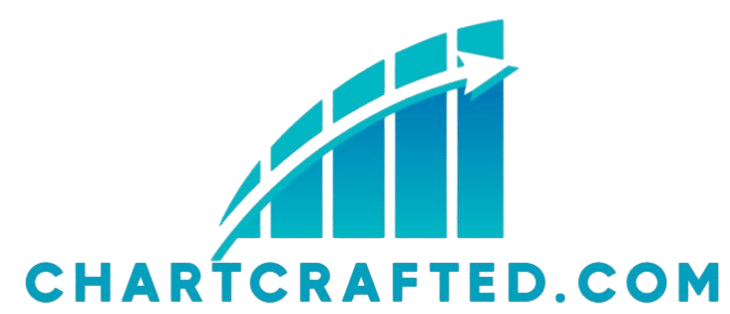How to Use Charts for Effective Risk Management
In today’s fast-paced business environment, mastering effective risk management is essential for your success. Grasping the complexities of risk and how to visually represent data can dramatically enhance your decision-making processes.
Let s dive into the core ideas of risk management and explore its importance! You ll discover various chart types such as pie, bar, and line charts that are invaluable for analyzing and interpreting risk data.
We’ll cover best practices for utilizing these tools to communicate critical information clearly and accurately, ensuring that all those involved are aligned and informed. Get ready to master the art of using charts in risk management now!
Contents
- Key Takeaways:
- Understanding Risk Management
- Types of Charts Used in Risk Management
- Interpreting and Analyzing Risk Data
- Using Charts to Communicate Risk Information
- Effective Presentation Techniques
- Best Practices for Using Charts in Risk Management
- Ensuring Accuracy and Relevance
- Collaborating with Team Members
- Frequently Asked Questions
- What is the importance of using charts for effective risk management?
- How do I choose the right type of chart for risk management?
- Can I customize charts to suit my specific risk management needs?
- How often should I update my risk management charts?
- What common mistakes should I avoid when using charts for risk management?
- Can charts be used to predict future risks?
Key Takeaways:

- Effective risk management requires a solid understanding of its definition and importance. Use charts to visually represent data and communicate risks to those involved.
- Pie, bar, and line charts are commonly used to analyze and interpret risk data. Identify trends and patterns to make informed decisions and manage risks effectively.
- To communicate risk information effectively, use best practices such as accurate and relevant data, effective presentation techniques, and collaboration with others. Charts can be powerful tools for risk communication.
Understanding Risk Management
Understanding risk management requires an organized method that you, as a safety manager, can employ to identify, assess, and prioritize potential concerns across various environments, especially in project management and operational contexts.
By adopting proactive risk management strategies, you can mitigate negative impacts and enhance safety performance. Use tools like the risk assessment matrix, tornado diagrams, and trending analysis.
Effective risk controls, along with regular reviews, enable you to make informed decisions, ensuring that your safety goals align with customer needs, resource allocation, and budget planning.
This comprehensive understanding is essential for cultivating a robust risk landscape that supports management performance and garners support from those involved.
Definition and Importance
Proactive risk management is all about taking a strategic approach where you, as a safety manager, actively engage in risk management activities to anticipate and mitigate potential issues before they escalate.
This methodology not only aids in identifying hazards but also helps you understand their potential impact on operations. By prioritizing risks and implementing preventive measures, your organization can protect its assets and personnel while boosting operational efficiency.
Effectiveness reviews are crucial in this process. They allow you to assess current risk management strategies and their outcomes, ensuring that any gaps are quickly identified and addressed. Continuous feedback from these assessments fosters a culture of ongoing improvement, ultimately leading to more resilient practices and an environment where safety takes center stage.
Types of Charts Used in Risk Management
Various types of charts are critical risk management tools that elevate data visualization and deepen your understanding of potential risks and their implications. Tools such as the risk assessment matrix and tornado diagrams hold particular value, enabling you to identify key performance indicators and analyze trends with precision.
By leveraging these visual aids, you can communicate risks more effectively, prioritize risk mitigation strategies, and refine your overall decision-making processes.
Pie Charts
Pie charts are an invaluable tool in data visualization, especially in risk management. They effectively illustrate the proportions of various risk categories and their overall contributions to safety metrics.
These visual aids transform complex data into easily digestible graphics. This method gives you a clear view of which risks need your urgent attention. For instance, in project management, using a pie chart to display the distribution of risks such as equipment failure, safety incidents, and compliance issues can be very beneficial.
During stakeholder reporting, pie charts efficiently convey performance metrics. This clarity simplifies the process for stakeholders to grasp the effectiveness of your risk mitigation strategies at a glance. It ensures that decision-making is well-informed and fosters accountability across the board.
Bar Charts

Bar charts provide a clear and concise way to compare different categories of risks. They are outstanding tools for prioritizing risks and analyzing management performance.
These visual representations allow you and other stakeholders to grasp complex data at a glance. By illustrating trends over time or contrasting multiple projects, bar charts enhance your understanding of performance metrics, enabling you to make informed decisions.
You can easily identify areas that require closer scrutiny or additional resources. This ultimately leads to enhanced safety protocols and improved project outcomes. The elegance of bar charts lies not just in their effectiveness at displaying raw data but also in their ability to weave a narrative, making them critical in your risk management and performance evaluation toolkit.
Line Charts
Line charts play a crucial role in your risk management strategy, as they effectively illustrate trends over time. This allows you to monitor performance metrics and pinpoint emerging risks with precision.
By visualizing critical data, these charts bring to light fluctuations in safety incidents or operational efficiencies, guiding you toward proactive measures. For example, a detailed analysis of a line chart tracking safety incidents might uncover a seasonal spike, prompting you to organize preventive training sessions before those peak periods hit.
Similarly, when assessing project costs, a line chart can clearly depict budget variances over time, signaling potential financial overruns. This enables you to adjust allocations and implement cost-saving strategies in real-time, enhancing the success of your projects and minimizing risks.
Interpreting and Analyzing Risk Data
Interpreting and analyzing safety data demands a deep understanding of risk analysis methodologies and effectiveness reviews. This ensures that performance metrics align perfectly with your organizational safety goals.
Identifying Trends and Patterns
Identifying trends and patterns within safety data is essential for your proactive risk management approach. It allows you to pinpoint emerging risks and potential concerns before they escalate.
By leveraging advanced analytical tools and methodologies, such as time-series analysis and heat mapping, you can conduct effective trending analysis and risk mapping. These techniques uncover correlations among various safety incidents and help you identify high-risk areas that may need immediate attention.
The implications of these findings are substantial; they guide your strategic decision-making and optimize resource allocation. This ensures that preventive measures and safety protocols are implemented where they are most needed. As a result, you can make informed choices that enhance overall workplace safety and minimize potential liabilities.
Using Charts to Communicate Risk Information
Utilizing charts to convey risk information effectively is crucial for securing stakeholder approval. This approach enables safety managers to articulate vital insights derived from their risk management tools, including how to use technical analysis for risk management, enhancing clarity and facilitating well-considered choices.
Effective Presentation Techniques

Effective presentation techniques in risk management demand that you embrace clear data visualization strategies. These strategies highlight key performance indicators, ensuring that people grasp essential information with ease!
By integrating these methodologies, you can significantly enhance how risk data is communicated! This makes it more accessible and engaging for your audience. Use storytelling techniques to transform raw statistics into compelling narratives that resonate with listeners, fostering a deeper connection to the material.
Incorporating various visual aids, such as graphs and charts, bolsters retention and succinctly illustrates complex information. This holistic approach cultivates buy-in and approval, as the clarity and relatability you provide are crucial for facilitating informed decisions about risk management strategies.
Best Practices for Using Charts in Risk Management
Implementing best practices for utilizing charts in risk management enables safety managers to communicate relevant and accurate information about safety performance and potential risks to team members with clarity and precision. This approach enhances understanding and fosters well-considered choices among all parties involved.
Ensuring Accuracy and Relevance
Ensuring accuracy and relevance in your risk management tools, like charts, is critical for maintaining the integrity of your performance metrics and effectiveness reviews.
Regular effectiveness reviews are pivotal in validating the accuracy of the data you represent! These evaluations check for numerical consistency and ensure that the data aligns with current safety issues relevant to your organization.
Keep your charts relevant by regularly updating them with the latest information and actively incorporating feedback from team members who utilize these tools. By diligently monitoring data s alignment with emerging risks, you can foster a culture of continuous improvement, ultimately leading to better decision-making and enhanced safety outcomes.
Collaborating with Team Members
Collaborating with team members is essential for ensuring that your risk prioritization efforts align seamlessly with organizational goals. This enables safety managers to communicate risk information effectively.
Engaging team members promotes transparency and invites diverse perspectives, significantly enhancing the robustness of your risk assessments. Use strategies like regular workshops, feedback sessions, and collaborative platforms to gather valuable insights from various departments. These interactions improve communication, allowing risk managers to grasp concerns and priorities more clearly while incorporating feedback into the risk management framework.
This cohesive approach simplifies the identification of potential risks, allowing you to prioritize them based on their impact and develop proactive strategies to effectively mitigate threats. Ultimately, this safeguards your organization s objectives and fortifies its foundation for success.
Frequently Asked Questions
What is the importance of using charts for effective risk management?

Charts provide visual representations of data, making it easier to identify patterns and trends. This is crucial for effective risk management, as using technical analysis allows for a better understanding of potential risks and their impact!
How do I choose the right type of chart for risk management?
The type of chart you choose depends on the data you want to analyze and the purpose of your risk management. Line charts show trends over time, bar charts are useful for comparing data, and pie charts illustrate parts of a whole.
Can I customize charts to suit my specific risk management needs?
Yes, most charting software lets you customize colors, labels, and other elements. This personalization makes your data analysis more effective.
How often should I update my risk management charts?
Regular updates are essential. Make changes based on data updates and shifts in risks to ensure your information remains current and accurate.
What common mistakes should I avoid when using charts for risk management?
Avoid cluttering your analysis with too many charts. Focus on the most relevant data for clarity.
Use accurate and consistent data to prevent misleading conclusions.
Can charts be used to predict future risks?
Charts can offer valuable insights and trends, but they shouldn t be your only tool for predicting risks. Always consider other factors and conduct thorough assessments for a well-rounded approach.






